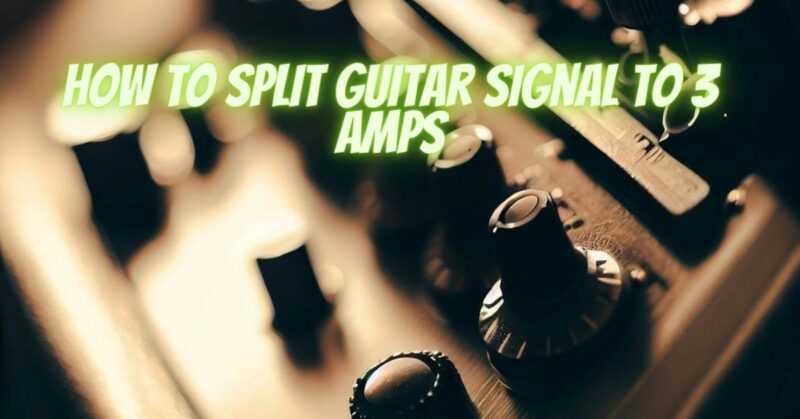Splitting a guitar signal to 3 amps is a great way to create a wider and more complex sound. By sending the signal to three different amps, you can achieve a variety of effects, such as:
- Increased low end: By sending the low frequencies to one amp, the mid frequencies to another, and the high frequencies to the third, you can create a wider and more powerful sound.
- Different tonal characteristics: Each amp will have its own tonal characteristics, so by sending the signal to three different amps, you can achieve a more diverse sound.
- Spatial effects: By panning the three signals left, center, and right, you can create a sense of space in your sound.
How to Split a Guitar Signal
There are a few different ways to split a guitar signal to 3 amps. The most common way is to use a Y-cable. A Y-cable is a simple device that has three outputs and one input. When you plug your guitar into the input of the Y-cable, the signal will be split and sent to all three outputs.
Another way to split a guitar signal is to use a DI box. A DI box is a more versatile device than a Y-cable, as it can also convert the signal to a line level signal. This makes it ideal for sending the signal to a PA system or recording interface.
Finally, you can also use a pedal that is specifically designed for splitting signals. These pedals typically have a few different settings that allow you to customize the way the signal is split.
Which Method Should You Use?
The best method for splitting a guitar signal depends on your specific needs. If you are simply looking for a way to increase the low end of your sound, then a Y-cable will be sufficient. However, if you want to achieve more complex effects, then you may want to use a DI box or a pedal that is specifically designed for splitting signals.
Splitting a guitar signal to 3 amps is a great way to create a wider and more complex sound. There are a few different ways to do this, so you can choose the method that best suits your needs. With a little experimentation, you can find the perfect way to split your guitar signal and create a sound that is truly unique.
Additional Tips
- When splitting a guitar signal, it is important to use high-quality cables. This will ensure that the signal is not degraded and that you get the best possible sound.
- If you are using a DI box, make sure that it is set to the correct input level. This will prevent the signal from clipping and distorting.
- Experiment with different settings on your amps to find the sound that you like best. You may want to try different EQ settings, amp settings, or even different amps altogether.
- Have fun! Splitting a guitar signal can be a great way to create new and exciting sounds. So experiment and see what you can come up with.
Here are some additional tips for splitting a guitar signal to 3 amps:
- Use a high-quality Y-cable or DI box to ensure that the signal is not degraded.
- Set the input levels on your amps correctly to avoid clipping or distortion.
- Experiment with different EQ settings and amp settings to find the sound that you like best.
- Have fun and be creative! There are endless possibilities when it comes to splitting a guitar signal.


